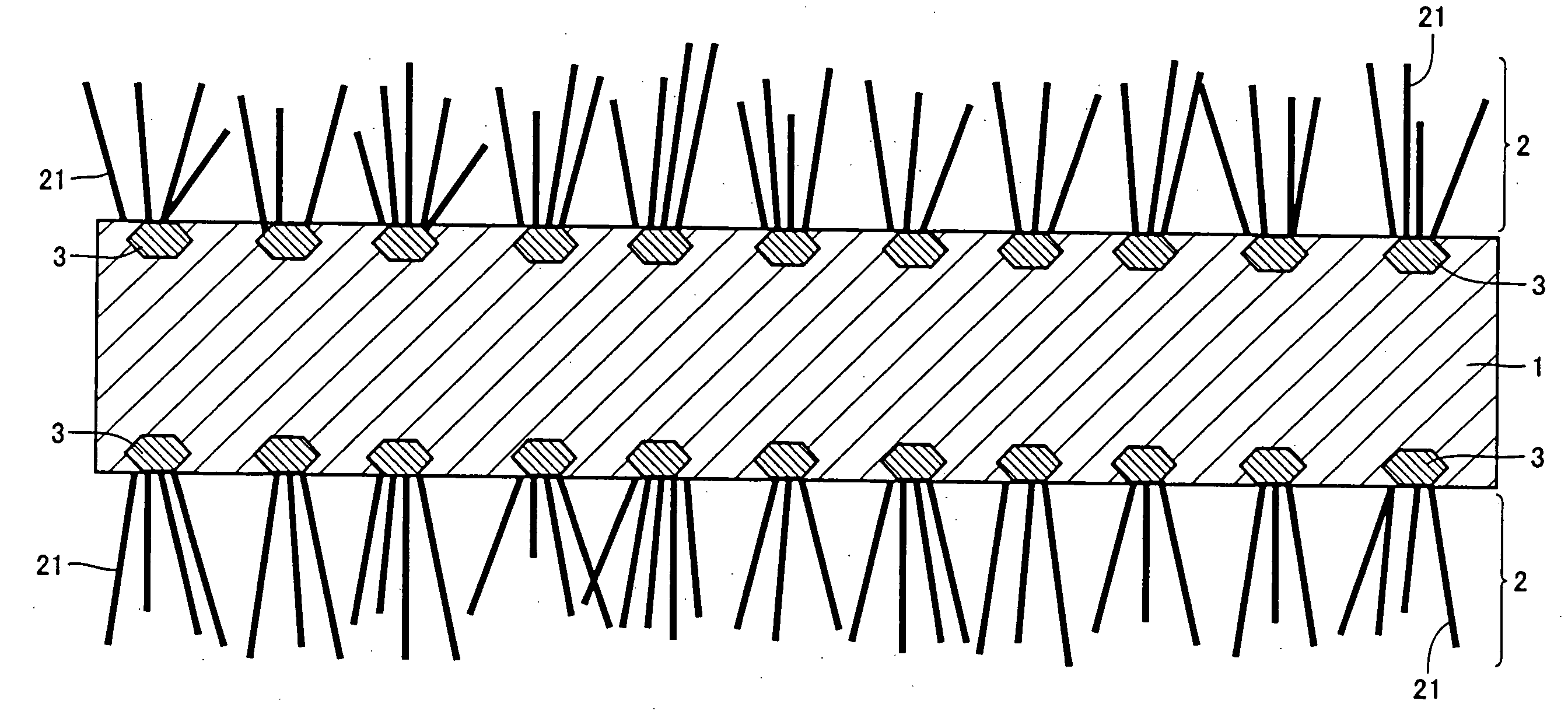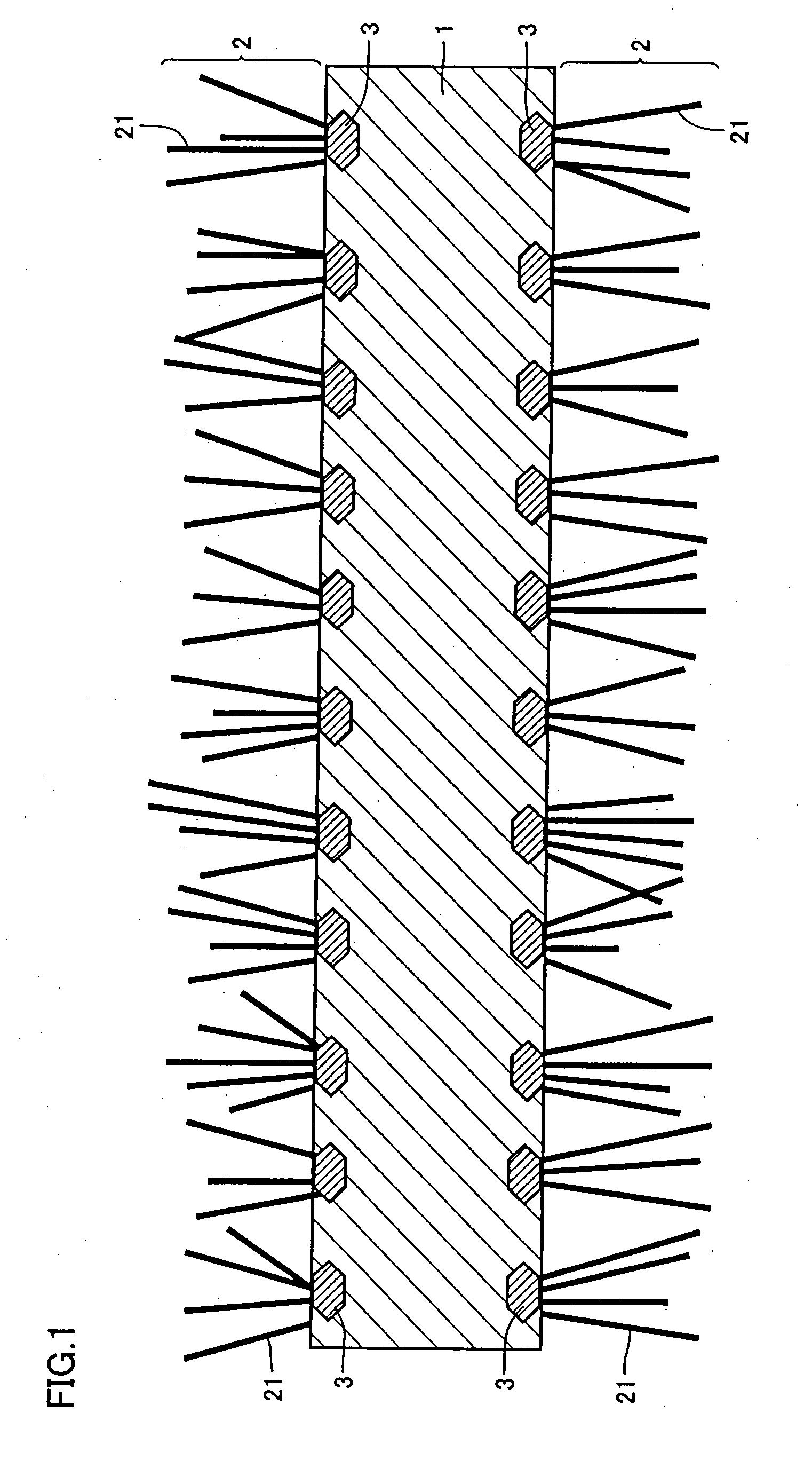Electrode Material and Method for Producing Same
- Summary
- Abstract
- Description
- Claims
- Application Information
AI Technical Summary
Benefits of technology
Problems solved by technology
Method used
Image
Examples
example 1
[0074]Two parts by weight of carbon black having an average particle diameter of 0.5 μm was mixed with 1 part by weight of an acrylic binder and the mixture was dispersed in a solvent (toluene) to obtain a coating solution having a solid content of 30%. This coating solution was applied to both surfaces of an aluminum foil (JIS A1050-H18) having a thickness of 30 μm and dried. The thickness of the coating film formed on each surface was 1 μm after the film was dried. This aluminum foil was kept at 590° C. in a methane gas atmosphere for 10 hours to manufacture an electrode material.
example 2
[0075]Two parts by weight of alminium powder having an average particle diameter of 1 μm was mixed with 1 part by weight of an acrylic binder and the mixture was dispersed in a solvent (toluene) to obtain a coating solution having a solid content of 30%. This coating solution was applied to both surfaces of an aluminum foil (JIS 1N30-H18) having a thickness of 15 μm and dried. The thickness of the coating film formed on each surface was 2 gm after the film was dried. This aluminum foil was kept at 620° C. in a methane gas atmosphere for 10 hours to manufacture an electrode material.
examples 3 to 10
[0076]Two parts by weight of carbon black having an average particle diameter of 0.1 μm and 2 parts by weight of an aluminum powder having an average particle diameter of 1 μm were mixed with an acrylic binder and the mixture was dispersed in a solvent (toluene) to obtain a coating solution having a solid content of 30%. This coating solution was applied to both surfaces of an aluminum foil (JIS A3003-H18) having a thickness of 12 μm and dried. The thickness of the coating film formed on each surface was 4 μm after the film was dried. This aluminum foil was heat-treated in the condition shown in Table 1. Deactivating treatment was carried out at 300° C. in the air for 2 hours after the heat treatment in Example 8. The aluminum foil was subjected to preheat treatment carried out at 400° C. in the air for 10 hours before the heat treatment in Example 9. In Example 10, after the heating treatment, the aluminum foil was subjected to dipping treatment carried out at 50° C. in a phosphori...
PUM
 Login to View More
Login to View More Abstract
Description
Claims
Application Information
 Login to View More
Login to View More - R&D
- Intellectual Property
- Life Sciences
- Materials
- Tech Scout
- Unparalleled Data Quality
- Higher Quality Content
- 60% Fewer Hallucinations
Browse by: Latest US Patents, China's latest patents, Technical Efficacy Thesaurus, Application Domain, Technology Topic, Popular Technical Reports.
© 2025 PatSnap. All rights reserved.Legal|Privacy policy|Modern Slavery Act Transparency Statement|Sitemap|About US| Contact US: help@patsnap.com



